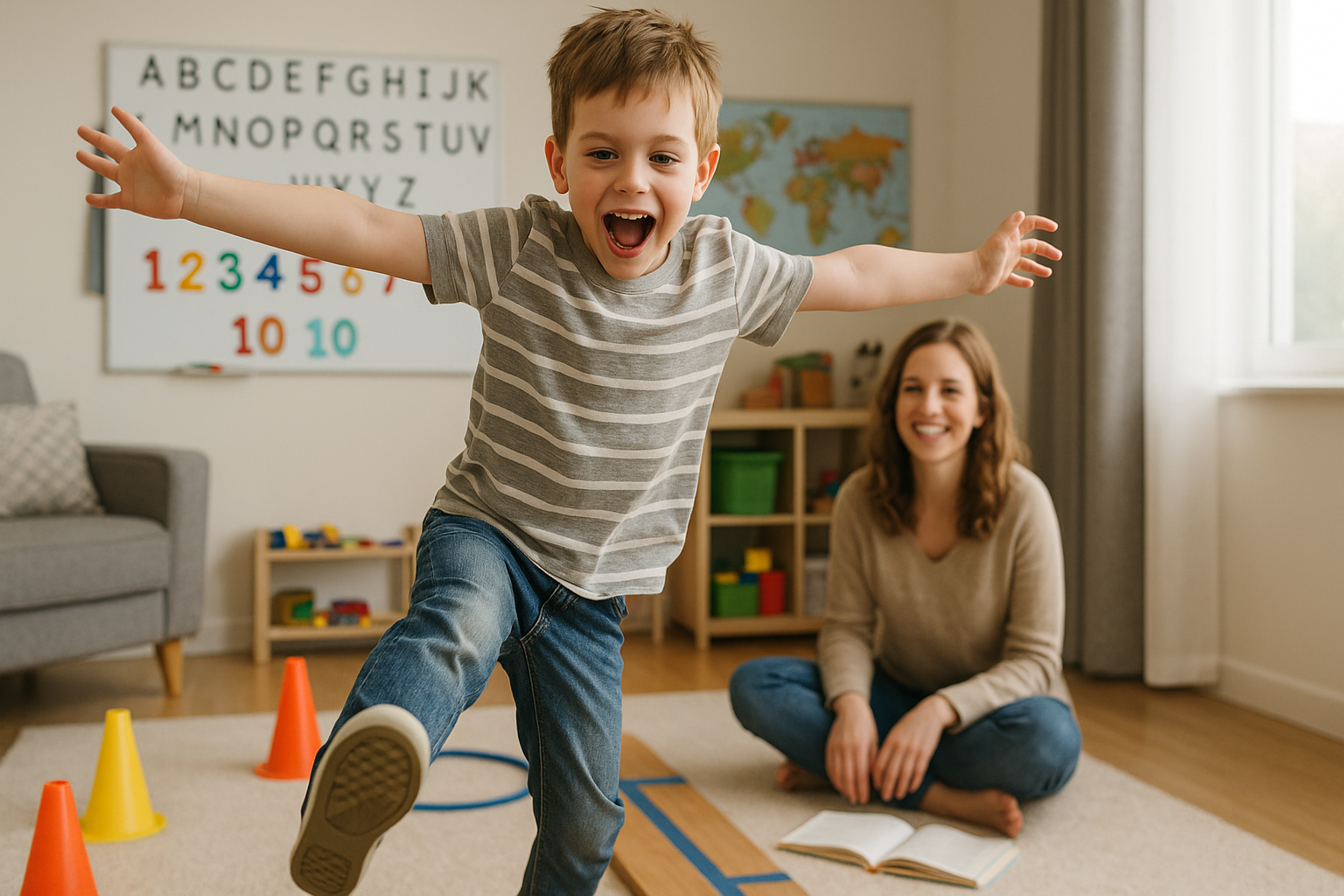Children with high energy levels can be a joyful challenge in the home learning environment. While their enthusiasm is admirable, hyperactivity can sometimes hinder focus and productive engagement. The key to success is not suppression but redirection — channeling that energy into meaningful, constructive activities that promote learning and development.
Understanding Hyperactivity in Children
Hyperactivity isn’t necessarily a disorder. Many children are naturally more energetic, curious, and eager to explore. It’s only considered a concern when it starts to disrupt daily life or learning consistently. For home educators, this means developing strategies that transform “chaotic” behavior into focused exploration.
Benefits of Structured Activities
When energy is channeled properly, children:
- Improve their attention span
- Strengthen motor and cognitive skills
- Learn emotional regulation
- Build a sense of accomplishment
The right activity provides just enough structure to guide their behavior while still allowing freedom and creativity.
Movement-Based Learning
Children who are constantly in motion thrive in environments where learning includes physical activity. Try these options:
1. Obstacle Courses at Home
Use cushions, tables, and tape to create safe, indoor obstacle courses. Assign tasks like counting steps between points, identifying colors, or spelling words at each stop.
2. Dance-and-Learn Sessions
Integrate music and education by creating dance sessions with an academic twist:
- “Jump when you hear a verb”
- “Spin when you hear a rhyming word”
This helps children associate movement with critical listening and comprehension.
3. Yoga for Kids
Yoga teaches balance, patience, and self-control. Use simple animal poses and keep sessions short — 5 to 10 minutes — especially when starting.
Sensory-Rich Activities
Hyperactive children often crave sensory input. These activities provide calming stimulation:
4. Kinetic Sand and Play Dough
Tactile experiences help ground children and improve hand strength and creativity. Encourage them to mold letters, shapes, or animals during play.
5. Water Play
Fill a tub or sink with water and let them play with measuring cups, rubber toys, and sponges. Add colored water for visual engagement. Incorporate lessons on volume and floating objects.
6. Sensory Bins
Create bins with rice, beans, or cornmeal. Hide small toys or letters inside for children to find, promoting fine motor skills and attention to detail.
Art and Expression
Art channels energy in a creative, often therapeutic way. Let your child express themselves freely within a goal-oriented structure.
7. Action Painting
Use large sheets of paper on the floor and encourage kids to paint with brushes, hands, or even their feet. Combine this with music to boost rhythm and creativity.
8. Timed Coloring Challenges
Give them a task: “Color all the animals red in 3 minutes.” This adds urgency and fun, promoting focus and hand-eye coordination.
Learning Through Play
Many hyperactive children respond better to games than traditional learning methods.
9. Flashcard Treasure Hunt
Hide flashcards around the house. Ask them to find and bring back the cards with numbers, letters, or words. It’s movement plus memory recall.
10. Educational Board Games
Games like matching pairs, memory tiles, or alphabet bingo are effective in improving cognitive function while keeping the activity dynamic.
Outdoor Adventures
Outdoor time is crucial for regulating energy levels and improving focus later during indoor lessons.
11. Nature Walks with Scavenger Hunts
Make walks more intentional by giving them a list of things to find: a red leaf, a round rock, a feather. This teaches observation and patience.
12. Gardening Tasks
Assign simple jobs like watering plants or digging soil. These provide structured physical tasks with visible results.
13. Animal Imitation Races
Have races where they pretend to be frogs, kangaroos, or crabs. This builds coordination and burns off excess energy in a fun way.
Emotional Regulation Activities
Helping children understand and regulate their emotions is key in managing hyperactivity.
14. Breathing Games
Use bubbles or pinwheels to practice deep breathing. Encourage slow inhales and steady exhales to calm their system.
15. Storytime with Emotion Talk
After reading a story, ask:
- “How do you think the character felt?”
- “What would you do if you were in that situation?”
This fosters empathy and reflection.
Creating a Routine with Flexibility
Hyperactive children benefit from routine — as long as it’s not rigid. Build daily schedules with pockets of freedom:
- Morning movement
- Midday sensory play
- Afternoon quiet learning
- Evening calming activities
Use visual schedules with images or magnets so they can see what’s next.
Tools and Materials That Help
Consider investing in:
- Bouncy seating (stability balls or wobble cushions)
- Fidget tools (tangles, squishy balls)
- Noise-canceling headphones for focused work
- Timers to break activities into manageable chunks
The Power of Positive Reinforcement
Don’t forget to celebrate wins, big or small. Use praise, high-fives, stickers, or even letting them choose the next activity. Reinforcement helps them understand the value of focus and effort.
Turning Energy into Strength
Hyperactivity can feel overwhelming, especially at home without professional support. But when that energy is met with structure, patience, and creativity, it becomes a powerful learning tool. By adapting your approach and viewing their energy as potential, not a problem, you foster an environment where your child can truly thrive — both emotionally and academically.
